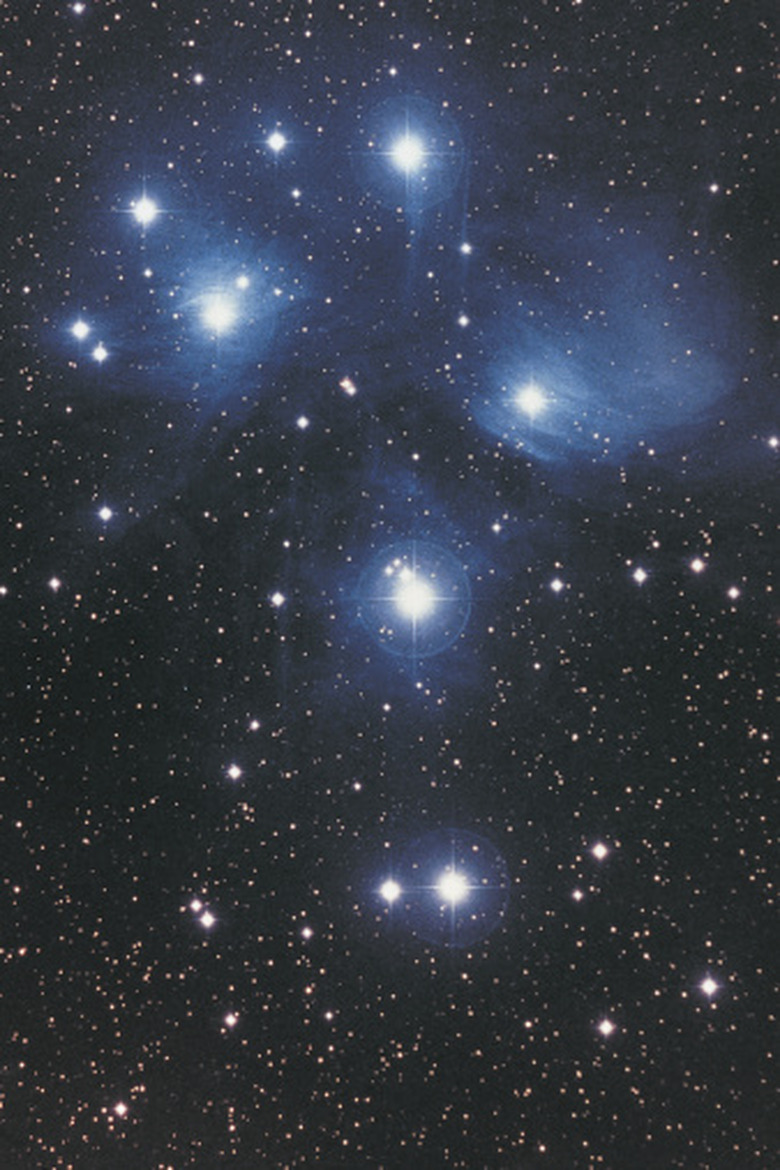Parts Of A Star
During most of a star's life, it is known as a main sequence star like the sun, with the same stellar parts and similar properties. From studying Earth's sun, scientists can learn abut the physical processes and structure of stars in general. All main sequence stars have a core, radiative and convective zones, photosphere, chromosphere and corona. Nuclear fusion powers a star and is responsible for giving off heat and light signatures that are detectable from Earth.
Core
Core
A star's core is the innermost part. It is the densest and hottest area. The sun's core has a density 10 times that of lead and a temperature of 27 million degrees Fahrenheit. Despite high density, the high temperature keeps the core in a gaseous state. In a stellar core, fusion reactions create energy that produce gamma rays and neutrinos.
Radiative and Convective Zones
Radiative and Convective Zones
Outside of the core is the radiative zone where energy is transported by radiation. According to the Contemporary Physics Education Project's sun information, "It becomes less efficient for energy to move by radiation, and heat energy starts to build up at the outside of the radiative zone. The energy begins to move by convection, in huge cells of circulating gas several hundred kilometers in diameter."
Photosphere
Photosphere
Outside the stellar zones is a star's photosphere, where visible light is emitted. In the case of the sun, this light can easily be detected by the naked eye. In the case of a distant star, a telescope might be required for viewing. Information about the temperature, composition and pressure of a star's photosphere is revealed by the spectrum of light.
Chromosphere
Chromosphere
Outside the photosphere is the chromosphere. In the sun, the chromosphere is red-colored from an abundance of hydrogen gas, though this color can only be seen with special filters or during an eclipse as a red circle. Solar flares that emerge from sun spots in the photosphere shoot out through the chromosphere.
Corona
Corona
The outermost part of a star is the corona. It extends for millions of miles into space. The sun's corona can only be seen by the naked eye during a solar eclipse. Immense clouds of glowing gas called prominences erupt from the upper chromosphere and shoot into the corona.
Cite This Article
MLA
Fielder, Dan. "Parts Of A Star" sciencing.com, https://www.sciencing.com/parts-star-8214357/. 24 April 2017.
APA
Fielder, Dan. (2017, April 24). Parts Of A Star. sciencing.com. Retrieved from https://www.sciencing.com/parts-star-8214357/
Chicago
Fielder, Dan. Parts Of A Star last modified March 24, 2022. https://www.sciencing.com/parts-star-8214357/
